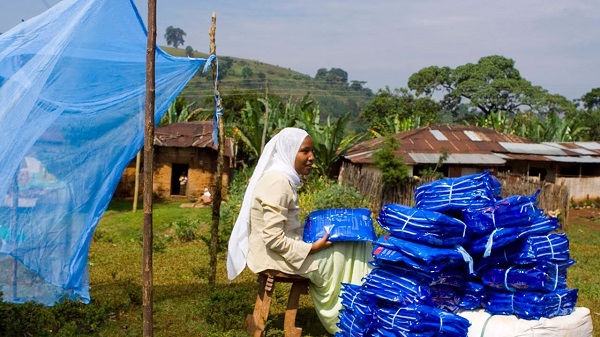
(AFP)–Cool, high-lying areas of Ethiopia hitherto shielded from heat-loving malaria mosquitoes are increasingly exposed to the disease as the climate warms, researchers said Thursday.
Most Ethiopians live in the country’s highlands, and have long enjoyed natural protection against mosquitoes carrying the malaria-causing parasites Plasmodium falciparum and P. vivax.
But the buffered area has been shrinking since 1981, scientists reported in the journal Environmental Research Letters. About six million people live in the newly-vulnerable regions.
Air temperatures below 18 degrees Celsius (64.4 degrees Fahrenheit) prevent development of P. falciparum. The survival threshold for P. vivax is 15 C, according to the research team.
Low temperatures also impede the spread of mosquitoes that host the parasites.
Since temperatures decrease with altitude, much of the Ethiopian highlands — 1,500 to 2,500 meters (4,921 to 8,202 feet) above sea level — were beyond the reach of malaria transmission.
To date, it was not known whether the mercury had risen in the East African highlands, or whether global warming contributed to a recent upsurge in malaria in the region.
To find out, a team from the University of Maine and Columbia University in New York compiled a national temperature dataset for Ethiopia covering the period 1981-2014.
They discovered that temperatures rose at least 0.22 C (0.4 F) per decade.
The team then used the new climate data to pinpoint the highest elevation where the average minimum temperature never exceeds the 18 C or 15 C malaria threshold.
“The elevation at which the temperature thresholds are met has risen by more than 100 meters (328 feet) since 1981,” the study’s lead author Bradfield Lyon of the University of Maine, said in a statement.
Read the complete story at Daily Mail Online
——
See also:
- OP-ED: Ending Malaria for Good is a Sound Investment
- Africa’s Anti-Malaria Efforts Face a New Hurdle – Drug and Insecticide Resistance
- Former Minister of Health Kesetebirhan Admasu Appointed as CEO of Roll Back Malaria
